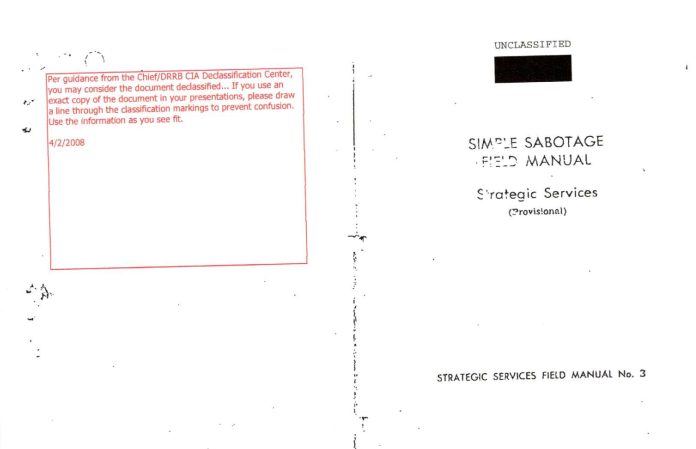
BREA, California – My accidental discovery of a declassified document written by the Office of Strategic Services (OSS), later to become the CIA, during World War II has revealed the original source of strategies adapted by oil and gas middle management to obstruct and demoralize the people who actually do the work. This is done to prevent any competent persons from rising in the organization, thus securing the middle manager’s position while he or she plots to enter upper management.
Read More: New circular experience program gives middle managers a wider perspective
The purpose of the manual was to give directions to persons working in Nazi-occupied Europe on how to slow or even stop vital war production. The principles have evolved to meet modern conditions.
What follows is verbatim the rules given in “Simple Sabotage Field Manual”, Strategic Services Field Manual No. 3. As you read through them, you will find yourself nodding in acknowledgement of what you have encountered yourself.
At Meetings and Conferences:
- Insist on doing everything through “channels.” Never permit shortcuts to be taken in order to expedite decisions.
- Make “speeches.” Talk as frequently as possible and at great length. Illustrate your points with long anecdotes and accounts of personal experience. Never hesitate to make a few appropriate “patriotic” comments.
- Where possible, refer all matters to committees for “further study and consideration.” Attempt to make the committees as large as possible – never less than five.
- Bring up irrelevant issues as frequently as possible.
- Haggle over precise wordings of communications, minutes, resolutions.
- Refer back to matters decided upon at the last meeting and attempt to re-open the question of the advisability of that decision.
- Advocate “caution.” Be “reasonable” and avoid haste which might result in embarrassments or difficulties later on.
- Be worried about the propriety of any decision – raise the question of whether such action as it is contemplated lies within the jurisdiction of the group or whether it might conflict with the policy of some higher echelon.
Read More: UofC creates Bachelor’s of Middle Management program
Managers and Supervisors:
- Demand written orders.
- “Misunderstand” orders. Ask endless questions or engage in long correspondence about such orders. Quibble over them when you can.
- Do everything possible to delay the delivery of orders. Even though parts of an order may be ready beforehand, don’t deliver it until it is completely ready.
- Don’t order new working materials until your current stocks have been virtually exhausted, so that the slightest delay in filling your order will mean a shutdown.
- Order high-quality materials which are hard to get. If you don’t get them, argue about it. Warn that inferior materials will mean inferior work.
- In making work assignments, always sign out the unimportant jobs first. See that the important jobs are assigned to inefficient workers.
- Insist on perfect work in relatedly unimportant products; send back for refinishing those which have the least flaws. Approve other defective parts whose flaws are not visible to the naked eye.
- Make mistakes in routing so that parts and materials will be sent to the wrong place in the plant.
- When training new workers, give incomplete or misleading instructions.
- To lower morale and with it, production, be pleasant to inefficient workers; give them undeserved promotions. Discriminate against efficient workers; complain unjustly about their work.
- Hold conferences when there is more critical work to be done.
- Multiply paperwork in plausible ways. Start duplicate files.
- Multiply the procedures and clearances involved in issuing instructions, pay checks, and so on. See to it that three people have to approve everything where one would do.
- Apply all regulations to the last letter.
If you would like to read the entire manual, you can find it at here. https://archive.org/details/SimpleSabotageFieldManual














